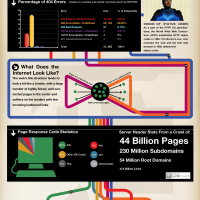When you request a web page online there may be times where you may see an error page appear on the screen. While it can be frustrating to see such a page, mainly because that means the content you were looking for won’t appear, the error number that appears actually has meaning to the owner of the web site.
There are many different status codes defined for requesting and sending data online, and all pages sent from the Web actually return one of several different status codes.
Server Header Information
Each request for data on the Web provides a response from the Web server. Within that response from the Web server is information regarding the type of response that is sent back to the client.
Such information included is the type of data being sent, such as a HTML Web page, a PDF document, or a JPEG image, the size of the data being sent, and the status code of the request.
The status codes have been defined since the beginning of the Web, and are well-known to those involved in the maintenance of Web sites. There are many common types of status codes, and you probably have seen many yourself. Codes such as 404 and 500 are common when a page cannot be found or there was an error processing the request on the Web server.
Below is an infographic that shows different server header responses that are common, and some of them you have probably seen before.
Infographic by SEOgadget.

